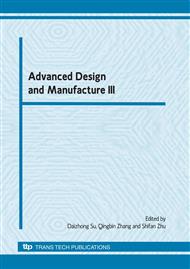p.457
p.461
p.466
p.470
p.474
p.478
p.482
p.486
p.490
Principle of Conforming Water-Fuel Ratio for Metal Matrix Fuel Water-Ramjet Engine
Abstract:
When water-ramjet engine working, its water-fuel ratio is needed to conform. Taking magnesium-based fuel for example, thermodynamic parameter of different formulation fuel under different water-fuel ratio was calculated with the free energy minimization method. It was found that the effective specific impulse of water-ramjet engine increased first and then decreased with the increasing of water-fuel ratio, so there was the maximum value of it, named optimum specific impulse. The corresponding water-fuel ratio was the best one, and then the performance ability of water-ramjet engine was the maximum one. The temperature of nozzle exit gradually decreased with the increasing of water-fuel ratio. When the temperature was lower than local vaporization temperature, water steam coagulated and it would cause the thrust force to decline. Therefore, when the water-ramjet engine is designed, the value of water-fuel ratio can't exceed the best water-fuel ratio by the premise of guarantee of the temperature of nozzle exit as high as possible.
Info:
Periodical:
Pages:
474-477
Citation:
Online since:
November 2010
Authors:
Price:
Сopyright:
© 2011 Trans Tech Publications Ltd. All Rights Reserved
Share:
Citation:


